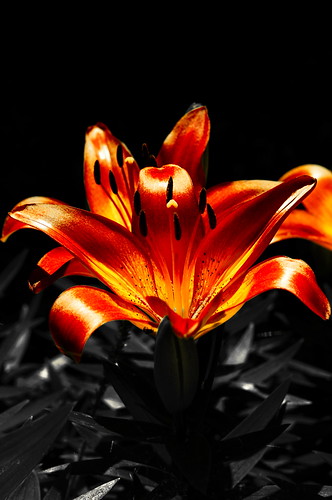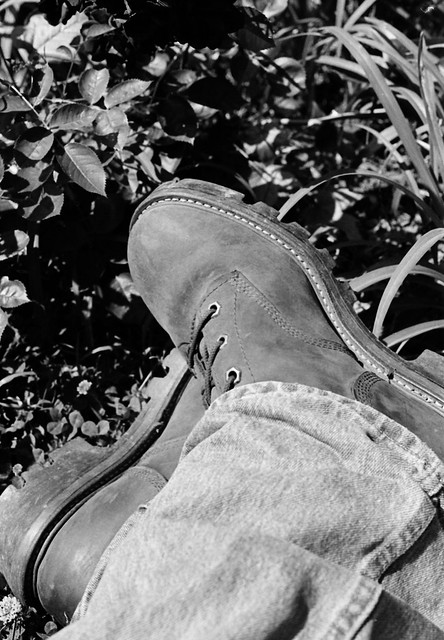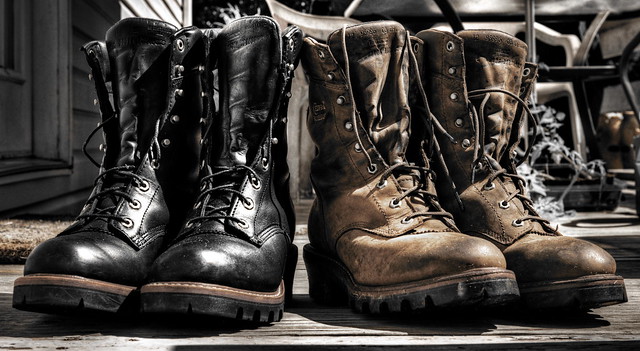Digital photography and film photography are different. This seems like a logical place to start, perhaps too basic, but logical. For me there are a lot of similarities between digital photography and film as well though because after the analog printing process the negatives are scanned and enter my digital image processing workflow. My digital photos are mostly complete before I can even touch them, the camera does a lot of the work, so it feels good to develop the film myself and know that I have a hand in the process, but there are things that film cannot do. Likewise there are things that digital is not well suited to.
For me, film is not a color process. As much fun as film developing is, I have no desire to learn the intricacies of C-41 to do things in color. This means that my tool for color has to be digital, and I am actually ok with that, digital is good with color, even if it does attempt to make things overly balanced, even and neat. While film is not so great at color, even for people who have the patience to deal with C-41, it is exceptionally good at delivering great tonal range. Film is also good at reacting to light and being responsive to optical filters applied when a photo is captured. I do enjoy playing with color, which is the reason I have an interest in HDR and tone mapping techniques.
The past two weeks I have worked on the thoughts I presented in my previous post. I have been shooting in RAW for digital and working with filters again in film. While thinking through the differences between the two mediums and how I apply them, I did begin to conceive of my film scanner a little differently. Before I was thinking of the film scanner as simply a method to move my analog negatives to a digital format. That simply cannot be the case. All of the documentation on scanning film considers the film scanner as an archival tool for preserving and fixing negatives that have aged. I am working with fresh film, but I still have all of the other tools available as well, so I have begun to think of the film scanner more like a photographic enlarger or other printing equipment in its optical properties. I can vary the brightness, amount to preserve the tonal range and how deep the shadows should be. This means that I have a good amount of control over each image, something that I was not taking advantage of before. From the digital side of things I have begun working with RAW files to allow me to do more work with the color depths, light levels and contrast of the images. One of the fun things I’ve been working with a lot is color subtraction. I have enjoyed removing certain colors from images for the purpose of making other colors stand out and producing a more dramatic image. This is similar to my filter techniques for film which allow me to emphasize certain colors (by filtering their wavelengths, or filtering their opposite).
I still have a lot to learn with both film and digital, but I feel like I’m gaining an awareness of the capabilities of each medium and I feel like the best thing for me to do as a creative photographer is to continue using both mediums, but to think carefully about the subject matter that is used with each to make the most interesting image.
 |
 |
 |
 |
Above are some examples of my work in both mediums. In my opinion the flower is better in digital (top left), where as the boots are more interesting and dramatic in film (bottom right). The flower was shot in both digital and film using a light green filter to reduce the impact of the foliage and emphasize the reds in the blossom (without overpower it). In digital I was able to further suppress the greens and bring out the reds, whereas in film all I was able to do was deepen the reds and slightly reduce the intensity of the green. The film boot photo was captured using an R25 (medium) red filter, the digital was captured without a filter. While I like both images, I find that the texture of the leather shows through more in the film version, which makes the boot appear soft, whereas the digital version shows the leather (of the brown boot) in a more harsh way, making the leather look more waxy and stiff than it appears in reality.